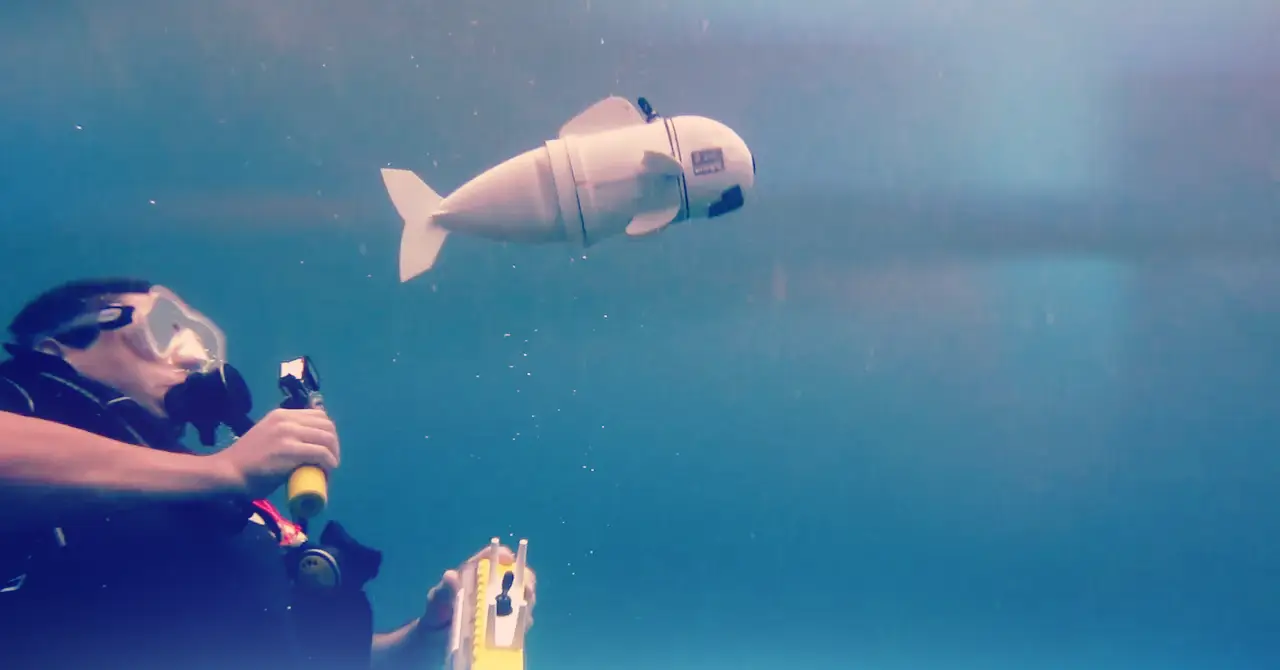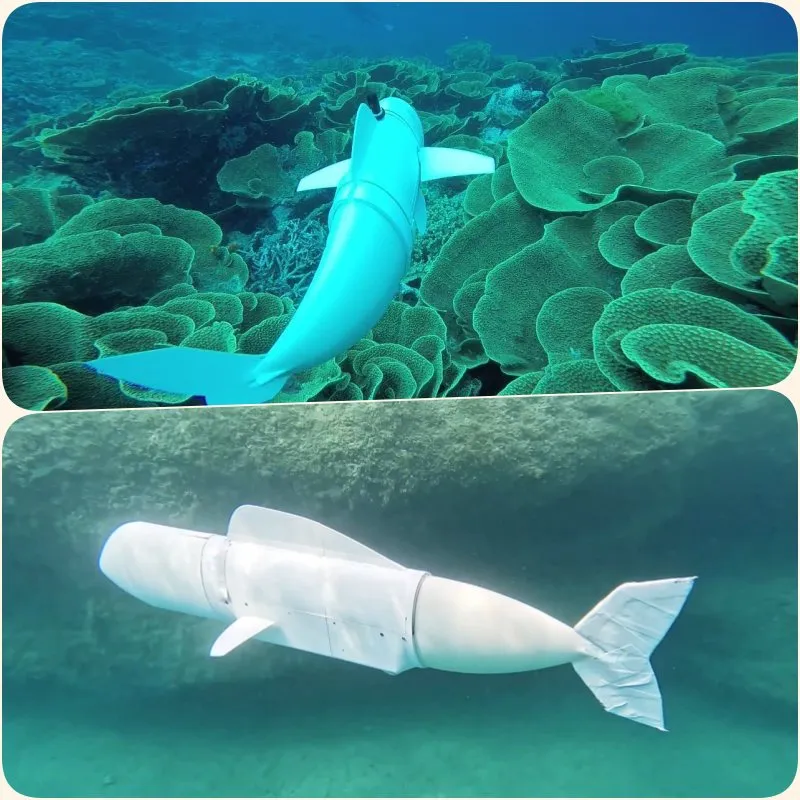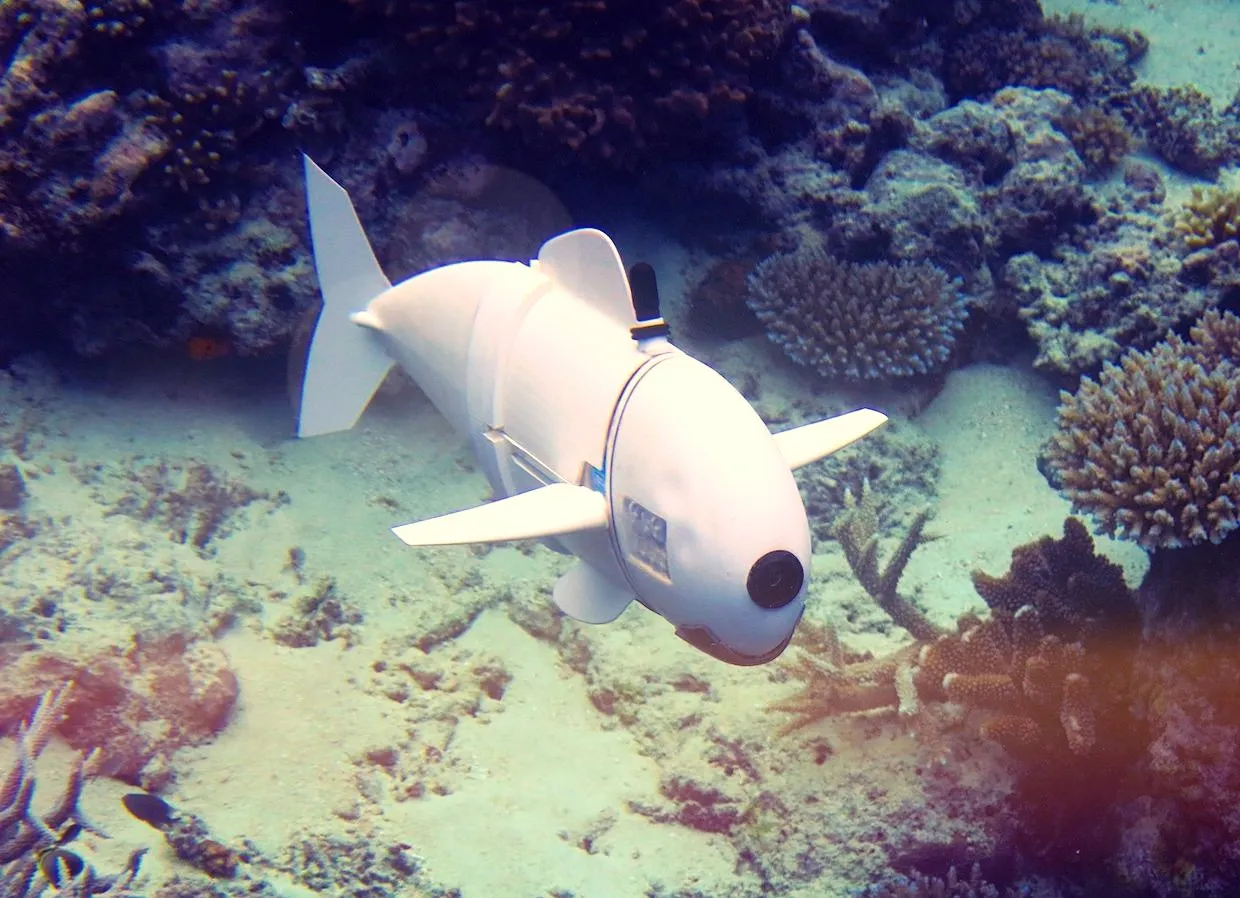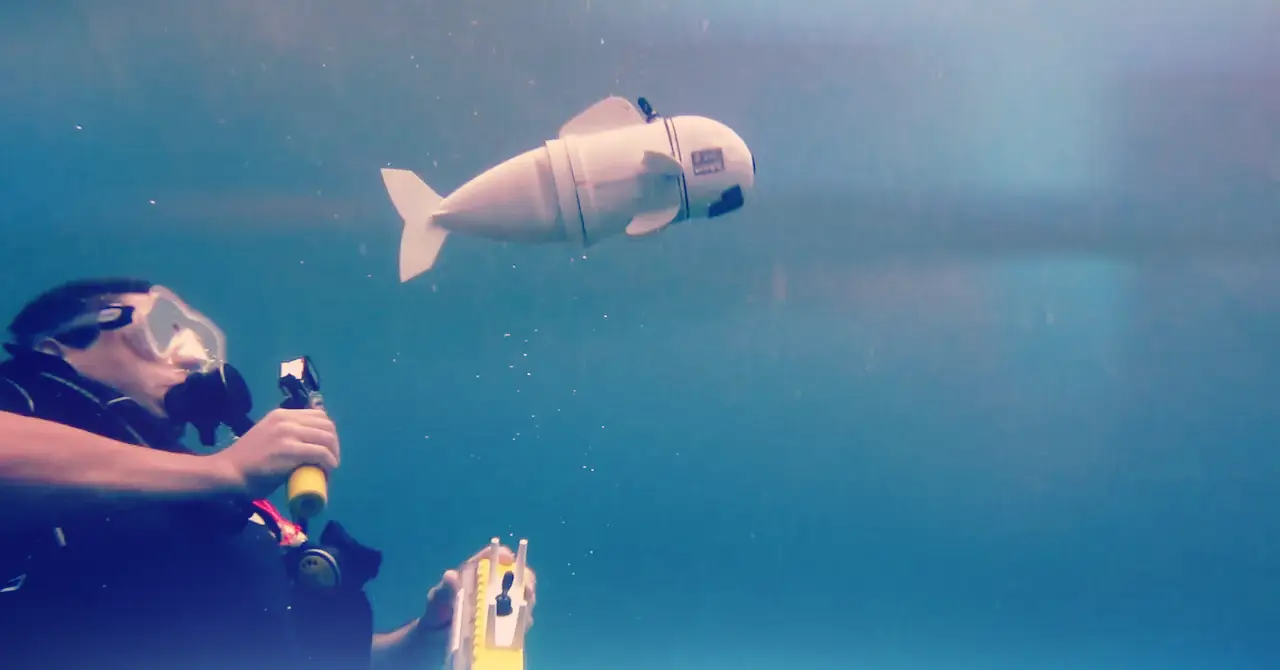
Located 400 kilometers (250 miles) from the nearest sea, ETH Zurich’s engineering students are pioneering advancements in marine research with their latest creation: “Eve,” a revolutionary robotic fish designed to transform how we study ocean ecosystems.

Eve is no ordinary robot. With its silicone tail moving rhythmically from side to side, powered by concealed pumps, Eve glides gracefully through the cool waters of Lake Zurich, where it is currently undergoing rigorous testing by the SURF-eDNA project. This student-led initiative has dedicated the past two years to developing a fleet of soft robotic fish, with Eve being the newest addition.
According to Dennis Baumann, a master’s student at ETH Zurich, “Eve’s fish-like appearance allows us to blend seamlessly into the ecosystem we’re monitoring.” This biomimetic design aims to minimize disruption to the aquatic environment, ensuring that the presence of Eve does not startle local fish or other marine life. “We can integrate into the ecosystem without causing disturbance,” Baumann added.

Eve’s design extends beyond its camouflage. This autonomous underwater vehicle (AUV) is equipped with a high-resolution camera for capturing underwater footage and sonar technology that, combined with sophisticated algorithms, helps it navigate and avoid obstacles. Additionally, Eve features a specialized filter that collects environmental DNA, or “eDNA,” as it moves through the water. This eDNA can be analyzed in a laboratory to identify the various species inhabiting the water body.
Martina Lüthi, a postdoctoral researcher at ETH Zurich, explained, “All animals shed their DNA into the environment, so we can collect and analyze this floating DNA to learn about the species present.” By utilizing Eve, scientists hope to gain a more comprehensive understanding of marine life, revealing insights into ecosystems that cover over 70% of our planet yet remain largely unexplored.
The use of AUVs and other remotely operated vehicles is becoming increasingly prevalent in ocean exploration. For instance, Aquaai, a California-based startup, has developed drones that mimic clownfish to measure key water parameters such as oxygen levels, salinity, and pH. Additionally, a rover recently captured footage of the deepest-ever fish at a staggering depth of 8,300 meters (27,350 feet).

As the practice of using eDNA to monitor biodiversity grows, the need for sophisticated tools is becoming more apparent. Traditional methods of eDNA collection, such as manually scooping water from a boat, are often rudimentary compared to these advanced technologies. Enhanced tools like Eve could prove crucial in safeguarding Earth’s oceans amidst challenges posed by climate change, overfishing, and other human activities.
Baumann expressed the team’s aspiration, “We aim to create a reliable tool for biologists that can be scaled for widespread use. Our goal is to help prevent species from becoming endangered or extinct.”
For those interested in learning more about Eve and its groundbreaking technology, a special television episode of *Tech for Good* featuring Eve will air in November. Cast your vote to see this innovative technology showcased on screen.



